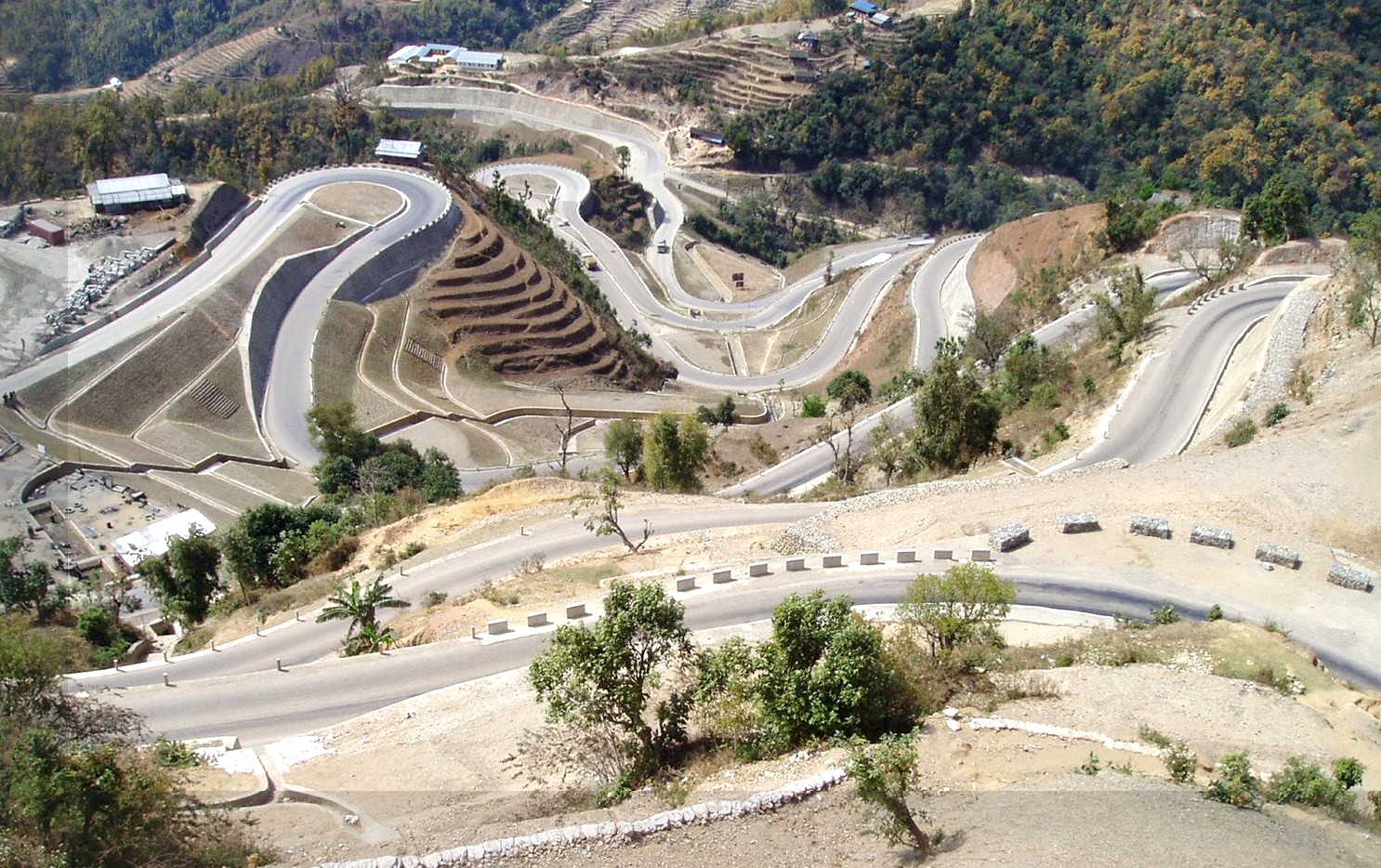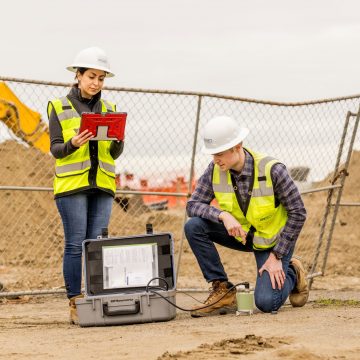Tailings Engineer: Important Competence for Lasting Waste Administration in Mining
Tailings Engineer: Important Competence for Lasting Waste Administration in Mining
Blog Article
The Significance of Soil Evaluation and Website Examination in the Geotechnical Industry: Ensuring Security and Security in Civil Design
In the geotechnical sector, dirt analysis and website examination are foundational components that underpin the safety and security and stability of civil design tasks. By completely recognizing dirt properties, engineers can preemptively address prospective challenges, inevitably protecting architectural honesty.
Comprehending Soil Residences
In the world of geotechnical engineering, a thorough understanding of dirt buildings is vital for educated decision-making and effective task layout. The characterization of soil entails the evaluation of numerous physical and mechanical buildings, such as grain size circulation, plasticity, shear, leaks in the structure, and communication stamina. These residential or commercial properties dictate exactly how soil behaves under different loading conditions and environmental influences, making them vital for evaluating website suitability for building and construction projects.
Dirt classification systems, such as the Unified Soil Category System (USCS) and the AASHTO classification, supply frameworks for organizing soils based on their characteristics. This category help designers in forecasting habits under stress, water flow, and settlement, therefore affecting style options and building and construction techniques.
In addition, the communication in between dirt and bordering structures is a vital consideration in geotechnical engineering. Understanding soil properties aids identify potential difficulties, such as liquefaction in earthquake-prone locations or too much negotiation in soft soils. By extensively evaluating these residential properties, geotechnical engineers can guarantee the safety and security, stability, and longevity of structures, ultimately adding to the general strength of civil design tasks.
Approaches of Soil Analysis

In-situ examinations include methods such as Standard Infiltration Examinations (SPT), Cone Infiltration Examinations (CPT), and vane shear tests. SPT examines the resistance of soil to penetration, offering data on thickness and toughness, while CPT gauges dirt resistance and pore pressure, yielding continual accounts of soil stratigraphy. Vane shear examinations are particularly valuable for assessing the shear stamina of natural dirts.
Research laboratory examinations match these in-situ evaluations and involve tasting dirt for controlled testing. Typical lab approaches include Atterberg limitations, which establish the plasticity attributes of fine-grained soils, and compaction tests, which analyze moisture-density partnerships. Extra tests, such as triaxial compression and unconfined compression examinations, are carried out to evaluate the shear toughness of soil examples under different conditions.
Duty of Site Investigation
Website investigation plays a crucial function in the geotechnical engineering procedure, acting as the structure for recognizing subsurface conditions. This extensive assessment entails systematic exploration of dirt and rock homes, groundwater degrees, and other geological attributes that influence project safety and security and stability.
Normally, site examinations include a selection of methods, including exploration boreholes, tasting, and in-situ screening. These approaches give vital information on the physical and mechanical characteristics of the ground, notifying designers regarding potential challenges such as soil negotiation, bearing ability, and incline security.
Moreover, site investigation helps with the recognition of unsafe products and contaminants, making it possible for investigate this site the execution of suitable removal procedures. By developing an exact subsurface profile, website examinations assist to minimize risks linked with construction, making sure that jobs stick to safety standards and guidelines.
The searchings for from a comprehensive site examination not just overview layout decisions however likewise affect building approaches and timelines. In recap, the value of site examination can not be overemphasized; it is a crucial step in the geotechnical engineering procedure, preparing for effective task execution while prioritizing public safety and security and environmental stability.
Effect on Project Layout
A detailed understanding of soil features substantially affects project layout in the geotechnical market. Soil analysis educates designers regarding the mechanical residential or commercial properties, composition, and behavior of you can check here the ground, which are crucial elements in identifying the feasibility and safety of a building and construction task. Exact information on dirt compressibility, leaks in the structure, and stamina enable the development of reliable structure styles, making sure that frameworks are sufficiently supported and secure throughout their life expectancy.
Additionally, the presence of impurities or unpredictable soil layers can prompt modifications in project design, such as choosing alternate construction techniques or products. This aggressive method minimizes dangers associated with soil settlement, excessive loading, or side activity, thus guarding both the integrity of the structure and public safety and security.
The integration of dirt evaluation into task style additionally assists in compliance with environmental factors to consider and regulative requirements. By resolving soil-related difficulties early in the design procedure, engineers can optimize resource allocation and minimize possible hold-ups and expenses related to unpredicted website conditions. Inevitably, thorough dirt analysis enhances the overall high quality and longevity of civil design tasks, leading to more resistant and lasting framework.
Situation Studies and Instances
Demonstrating the essential role of soil analysis in the geotechnical sector, different study highlight its effect on task end results. One significant instance is the building of a skyscraper in midtown Los Angeles, where substantial dirt screening exposed unsteady subsurface problems. geo tech engineer. By determining the visibility of extensive clay, engineers were able to upgrade the foundation, integrating deep pilings that guaranteed security and safety and security, inevitably preventing prospective architectural failures

Lastly, a dam job in the Southeast encountered hold-ups as a result of unforeseen soil disintegration issues. Comprehensive soil analysis enabled engineers to implement effective stabilization techniques, making sure that the dam fulfilled safety and security policies while sticking to the job timeline. These situations underscore the requirement of complete soil analysis and website investigation, highlighting their crucial role in achieving successful and secure civil design tasks.
Verdict
In verdict, soil evaluation and site examination are essential components of the geotechnical sector, playing an essential function in making sure the safety and security and stability of civil engineering jobs. By providing try here essential data on dirt buildings and subsurface conditions, these procedures inform structure style and construction techniques. In addition, complete investigations add to threat identification and threat mitigation, eventually enhancing the long life and sturdiness of structures while enhancing resource allocation throughout the task lifecycle.
In the geotechnical sector, soil evaluation and site investigation are fundamental components that underpin the security and security of civil engineering tasks. Understanding soil homes assists identify possible obstacles, such as liquefaction in earthquake-prone areas or extreme settlement in soft soils. SPT reviews the resistance of dirt to penetration, offering data on thickness and toughness, while CPT determines dirt resistance and pore pressure, yielding continuous profiles of soil stratigraphy. These instances underscore the requirement of detailed soil analysis and website examination, highlighting their vital role in attaining risk-free and effective civil design jobs.
In conclusion, soil analysis and website examination are basic components of the geotechnical market, playing a critical function in ensuring the safety and stability of civil engineering projects.
Report this page